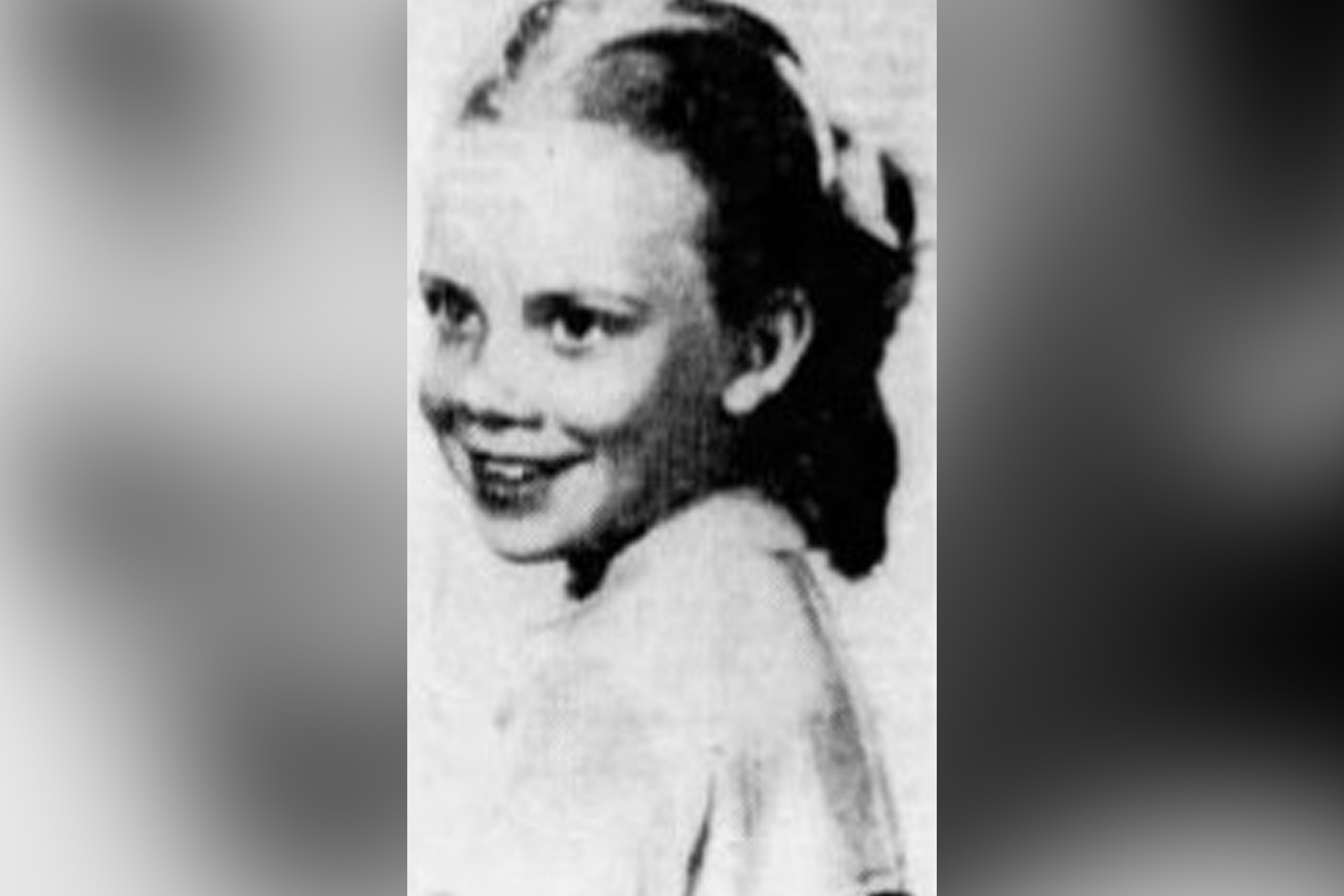Create a free profile to get unlimited access to exclusive videos, breaking news, sweepstakes, and more!
1959 Murder Of 9-Year-Old Selling Candy, One Of Washington’s Coldest Cases, Finally Solved
A genealogical analysis finally pinpointed the killer of Candy Rogers, who disappeared while selling candy in 1959.

The brutal murder of a nine-year-old girl in 1959 has finally been solved, marking an end to one of Washington state’s oldest cold cases.
Candice “Candy” Rogers disappeared while selling Camp Fire Mints — a fundraiser for the Camp Fire Girls, a Girl Scout-like organization — in her Spokane neighborhood on March 6, 1959, according to a press release issued by the Spokane City Police Department. Searchers found boxes of mints strewn along the street; it was the only indication of which direction she could have gone.
In the following days, approximately 1,200 volunteers gathered to find the missing girl. Even the U.S. Air Force assisted the vast search with a helicopter crew to scan the land from above.
(Unfortunately, one day after Candy Rogers’ disappearance, a Sikorsky H-19 helicopter stuck high-tension power lines and crashed into the Spokane River. Three crew members — Airman Marlice D. Ray, Sgt. William A. McDonnell and Lt. Kenneth G. Fauteck, were killed in the crash. Two other airmen survived.)
About two weeks later, on March 21, two airmen from the nearby Fairchild Air Force base were hunting in the woods off Old Trails Road — about seven miles from Candy’s home — when they discovered a pair of girl’s shoes. They reported their findings when they returned to base, fearing they might be related to the missing child.
A new search was initiated in that area the following day, Candy Rogers' body quickly found, buried under a shallow layer of brush and pine needles.
Police say the victim was raped and strangled to death with her own clothing. A viable suspect was never developed despite thousands of tips.
Still, generations of investigators tried to solve the case.
“With no way of knowing the future of trace evidence and sensitivity of ensuing testing procedures, it is a testament to the diligence of investigators in 1959 that evidence was preserved in such a manner [that] DNA could be extrapolated 62 years later,” the press release stated.
In early 2021, lab experts with the Washington State Police submitted a sample of semen collected from the Candy Rogers' clothing. According to police, a Texas lab ran the specimen through a genealogy database, which alerted them to a possible match with three brothers.
Of the three men, only one of them, John Reigh Hoff, had a child. Hoff himself had died by suicide in 1970.
“Investigators contacted the daughter of John Reigh Hoff and, upon learning the nature of the inquiry, she dropped everything and met with detectives,” said police. Testing showed the daughter’s DNA was related to the sample taken from the crime scene.
To confirm their findings, investigators exhumed Hoff’s body and tested his DNA against the semen collected from the crime scene.
“The result showed a match between John Reigh Hoff and the semen specimen collected from Candy, with a probability threshold indicating it was 25 quintillion (18 zeroes) times more likely the sample came from John Reigh Hoff than an unrelated person chosen at random from the general population.”
It was not clear if Candy’s surviving relatives are alive today.
According to police, Hoff was 20 years old at the time of the murder and lived one mile from Candy’s home. He was raised in Spokane and served in the US Army beginning at age 17, stationed at missile sites surrounding Fairchild.
In 1961, Hoff was convicted of second-degree assault with the intent to rob. Police say that he “accosted a female, forcibly removed the victim’s clothes, tied her up using her own garments, and strangled her before fleeing the scene.” That victim survived; Hoff received a sentence of six months.
As a result of his conviction, he was declared a deserter from the Army and dishonorably discharged. After his release, but before his death, he worked as a door-to-door salesman and in a lumberyard.
When asked for his guess as to how many hours were invested into Candy Rogers' case, Sgt. Zac Storment said, “This isn’t measured in hours, this is measured in careers.”
























